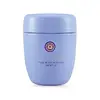What's inside
What's inside
 Key Ingredients
Key Ingredients

 Benefits
Benefits

 Concerns
Concerns

 Ingredients Side-by-side
Ingredients Side-by-side

Microcrystalline Cellulose
AbsorbentOryza Sativa Powder
Sodium Lauryl Phosphate
EmulsifyingSodium Lauroyl Glutamate
Sodium Stearoyl Glutamate
CleansingWater
Skin ConditioningSodium Cocoyl Glutamate
CleansingLauryl Betaine
CleansingSodium Lauroyl Methylaminopropionate
CleansingCamellia Sinensis Leaf
PerfumingPapain
Skin ConditioningOryza Sativa Bran Extract
Skin ConditioningPropanediol
SolventDextrin
AbsorbentEthylhexylglycerin
Skin ConditioningKaolin
AbrasiveTocopherol
AntioxidantPhytosteryl/Octyldodecyl Lauroyl Glutamate
Skin ConditioningDipotassium Glycyrrhizate
HumectantSilica
AbrasiveButylene Glycol
HumectantPhenoxyethanol
PreservativeCI 77492
Cosmetic ColorantCI 77007
Cosmetic ColorantMicrocrystalline Cellulose, Oryza Sativa Powder, Sodium Lauryl Phosphate, Sodium Lauroyl Glutamate, Sodium Stearoyl Glutamate, Water, Sodium Cocoyl Glutamate, Lauryl Betaine, Sodium Lauroyl Methylaminopropionate, Camellia Sinensis Leaf, Papain, Oryza Sativa Bran Extract, Propanediol, Dextrin, Ethylhexylglycerin, Kaolin, Tocopherol, Phytosteryl/Octyldodecyl Lauroyl Glutamate, Dipotassium Glycyrrhizate, Silica, Butylene Glycol, Phenoxyethanol, CI 77492, CI 77007
Water
Skin ConditioningSodium Laureth Sulfate
CleansingCocamidopropyl Betaine
CleansingPanthenol
Skin ConditioningGlycolic Acid
BufferingGluconolactone
Skin ConditioningNiacinamide
SmoothingAloe Barbadensis Leaf Juice Powder
Skin ConditioningPEG-120 Methyl Glucose Trioleate
CleansingSodium Chloride
MaskingSodium Hydroxide
BufferingDisodium EDTA
Ethylhexylglycerin
Skin ConditioningPropanediol
SolventPhenoxyethanol
PreservativeSodium Benzoate
MaskingParfum
MaskingLimonene
PerfumingGeraniol
PerfumingHydroxycitronellal
PerfumingLinalool
PerfumingCitronellol
PerfumingCI 19140
Cosmetic ColorantCI 14700
Cosmetic ColorantWater, Sodium Laureth Sulfate, Cocamidopropyl Betaine, Panthenol, Glycolic Acid, Gluconolactone, Niacinamide, Aloe Barbadensis Leaf Juice Powder, PEG-120 Methyl Glucose Trioleate, Sodium Chloride, Sodium Hydroxide, Disodium EDTA, Ethylhexylglycerin, Propanediol, Phenoxyethanol, Sodium Benzoate, Parfum, Limonene, Geraniol, Hydroxycitronellal, Linalool, Citronellol, CI 19140, CI 14700
 Reviews
Reviews

Alternatives
Ingredients Explained
These ingredients are found in both products.
Ingredients higher up in an ingredient list are typically present in a larger amount.
Ethylhexylglycerin (we can't pronounce this either) is commonly used as a preservative and skin softener. It is derived from glyceryl.
You might see Ethylhexylglycerin often paired with other preservatives such as phenoxyethanol. Ethylhexylglycerin has been found to increase the effectiveness of these other preservatives.
Phenoxyethanol is a preservative that has germicide, antimicrobial, and aromatic properties. Studies show that phenoxyethanol can prevent microbial growth. By itself, it has a scent that is similar to that of a rose.
It's often used in formulations along with Caprylyl Glycol to preserve the shelf life of products.
Propanediol is an all-star ingredient. It softens, hydrates, and smooths the skin.
It’s often used to:
Propanediol is not likely to cause sensitivity and considered safe to use. It is derived from corn or petroleum with a clear color and no scent.
Learn more about PropanediolWater. It's the most common cosmetic ingredient of all. You'll usually see it at the top of ingredient lists, meaning that it makes up the largest part of the product.
So why is it so popular? Water most often acts as a solvent - this means that it helps dissolve other ingredients into the formulation.
You'll also recognize water as that liquid we all need to stay alive. If you see this, drink a glass of water. Stay hydrated!
Learn more about Water